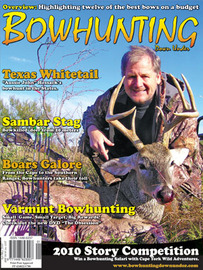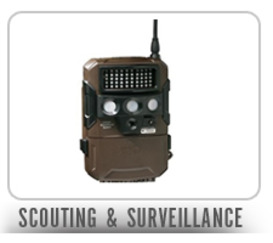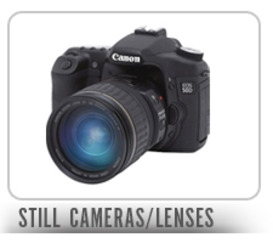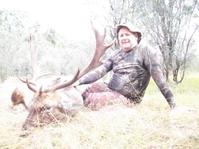 Taking quality pictures and video can be made easy if you follow a tips and tricks.
Taking quality pictures and video can be made easy if you follow a tips and tricks.After days of hunting in the mountains or the outback and weeks or preparation, you finally bagged the trophy of your dreams. Sure, the taxidermist can preserve the animal and the memory of the hunt for you. But a picture truly is worth a thousand words. The difference between a great hunting photo and a bad one is immense. However, taking great photos isn’t just for professional photographers. A few simple steps can transform your photography from amateur to top of the line.
Take Your Time Great photos rarely come in an instant. Most are well planned and the subjects of the photos are staged. Sure it may take a few minutes to get everything right but think about how much preparation we put into taking game. Isn’t it worth it to spend an extra few minutes to make the photos documenting the day special?
Look Sharp Chances are people who don’t do a lot of hunting are going to see your photos. I don’t advocate changing your actions just to impress non-hunters. However, casting a negative light on hunting can convert a non-hunter into an anti-hunter in a hurry. Take photos before the animal has been field dressed and wipe up any excess blood from the wound and the nose. Try to put the animal in a bedded down position with legs folded up and stick the tongue back in the mouth. Stretch out birds as if they are flying. Don’t forget to clean up the person in the photo too. If wearing a hat, lift the hat up so eyes are visible. Unless the hunt occurred on the beach, remove sunglasses. And don’t forget to smile!
Natural setting One of the biggest mistakes made in trophy photographs is the setting. No matter how big the buck is, he still looks ridiculous in the bed of a pick-up. Or how about trophy pictures with the neighbor's pool in the background. Worse yet its the hanging in the garage picture. Take good photos in the field where the animal lived it’s life and where you spend quality time. Some campers like to hang their deer and get a shot of the “meat pole” for nostalgia purposes. Nothing wrong with that but for a truly great trophy picture, take the shot in the field.
Vertical Plane The setting of a picture is a glaring mistake but vertical plane is a composition error that often goes unnoticed by novice photographers. When taking pictures the camera should be at the same height as the subject. Often the shooter will kneel next to his or her trophy while the photographer stands to take the photo. The result is a smaller looking trophy. Another issue is that the bill of a hat will hide the eyes of the hunter if the camera is shooting from above.
Light Source Most photographers recommend shooting with the sun behind the camera. In most cases, that is good advice. However, try to avoid sharp contrasting shadows and be sure the photographer’s shadow is not in the photo. For dramatic sunset photos set up with the retreating sun in the corner of the shot to capture what could be an epic skyline. In this situation be sure to use some sort of flash to avoid silhouetting the subject.
Overshoot: There was a time when film was expensive and processing was even more costly. The proliferation of digital cameras has ended that era. Now you can take as many photos as you want and only print the good ones. This is another secret of the pros. They often take hundreds of pictures for just one great shot. We have all seen videos of swimsuit model shoots. Well, I have. I recommend watching one just for reference. You’ll notice the photographer often has the model tilt their head and bodies in different directions. This will capture different features of the model and angles of light. It works the same way when you are taking pictures while hunting. Maybe it’s not quite the same but a little research never hurt anyone.
Other Shots
Hero shots make up the vast majority of the photos in hunter’s albums. Hunting magazines don’t shy away from them but hero shots are just a small minority of the photos in each issue. You’ll see shots of mountain vistas, great sunsets, non-game species, and hunters hunting. Try to tell a story with your pictures.
The grip-and-grin shots are great for showing off. However, to capture the true essence of the hunt, take plenty of pictures during the hunt as well. While silence is golden during big game hunts, there is no shortage of photo opportunities. Try getting shots while hiking and getting in and out of the stand. Bird hunting is made for the camera. Dogs are always photogenic and the click of the camera won’t bother upland birds or waterfowl.
The best advice is a good recommendation for anything worthy of doing well, practice. Take a critical look at your pictures and think about how you would improve them. Then use that information to make your next photos better.
.
-
-
Here are some quick points to keep in mind to help you set up for a high quality photograph.
First thing is first, take your time. You may have spent half your life dreaming of this moment, enjoy it.
The animal should, if possible, remain whole during the picture process. Blood and entrails really do not look great in your living room.
Be prepared to move the animal to another location, at times the animal may lay down in a spot not great for images.
Clean up the blood and put the tongue back in the mouth. At times some well placed greenery may cover a large blood spot.
Antlers and horns are typically dark and look even better if put in front of a light background, like the sky line.
Sit behind the trophy and take shots from many different angles. If you are alone, a tripod and a camera with a timer are a must.
The hunter and animal should fill up the entire frame, some back and foreground will keep a sense of wilderness.
-
-
The digital cameras of today, take the time to review your images, and adjust accordingly.
Most importantly, smile! This is a hunt of a lifetime and you just pulled it off, you earned this moment….own it!
Remember "Practice makes for perfect shot"



 Over exposed:
Over exposed:Light Source Most photographers recommend shooting with the sun behind the camera. In most cases, that is good advice. However, try to avoid sharp contrasting shadows and be sure the photographer’s shadow is not in the photo. For dramatic sunset photos set up with the retreating sun in the corner of the shot to capture what could be an epic skyline. In this situation be sure to use some sort of flash to avoid silhouetting the subject.
Camera Tips & Tricks

Camera Tips & Tricks For Better Hunting Photos